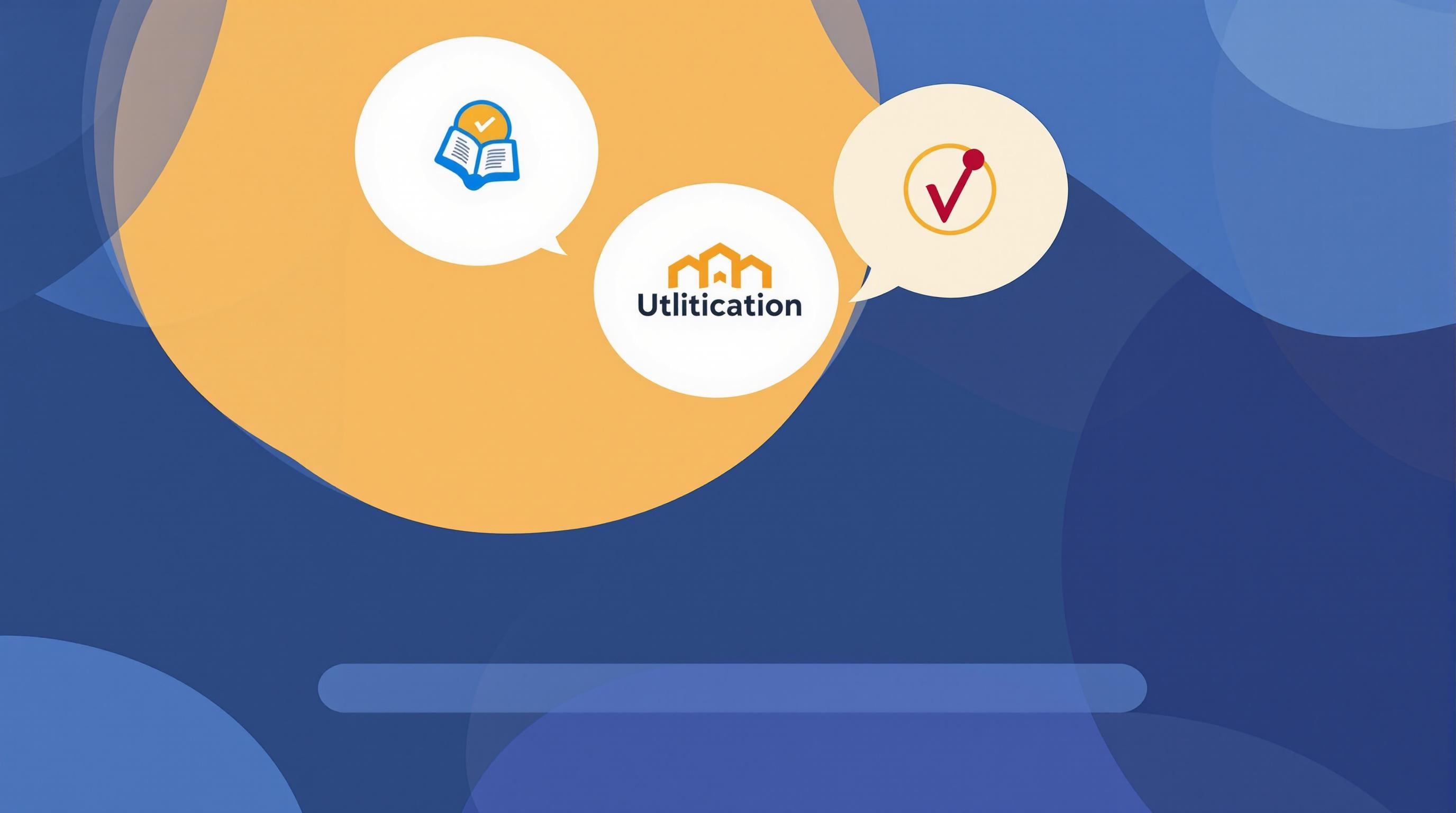Related Articles
- When Campus Cafeterias Shape Your Wallet More Than Tuition: The Overlooked Price of Student Food Choices
- How AI-Powered Avatars Are Changing Remote Campus Experiences Beyond Traditional Virtual Visits
- 7 Essential Digital Planners Released Since 2019 for Mastering Your College Application Timeline Like a Pro
- Unseen Impact of Accreditation Shifts on Small College Town Economies and Local Communities
- How Campus Eco-Initiatives Secretly Shift Student Choices Beyond Traditional Ranking Metrics
- 7 Emerging Smart Notebooks for Interns That Outperform Traditional Paper Planners
Top 7 Cutting-Edge Education Platforms Launched in Last 5 Years: A Comprehensive Comparison and Review
Top 7 Cutting-Edge Education Platforms Launched in Last 5 Years: A Comprehensive Comparison and Review
Top 7 Cutting-Edge Education Platforms Launched in Last 5 Years: A Comprehensive Comparison and Review
Introduction
The landscape of education technology has transformed remarkably in the past five years, driven by innovative platforms that leverage advanced technologies like AI, AR, and personalized learning algorithms. These platforms are designed to meet diverse learning needs, making education more accessible, engaging, and effective. This article reviews the top seven cutting-edge education platforms launched recently, comparing their unique features and benefits.
Education platforms today seek to move beyond traditional learning management systems, emphasizing interactivity, real-time feedback, and adaptive learning paths. With the global shift to remote and hybrid learning models, the demand for robust digital solutions has increased dramatically. Our selection criteria include innovation, user engagement, content quality, and scalability.
In this comprehensive review, we analyze each platform’s technological advancements, user experience, and educational impact. By examining how these platforms address modern learners' challenges, educators and students can better navigate the evolving education environment and choose solutions suited to their specific needs.
1. LearnX
Launched in 2020, LearnX integrates AI-driven personalization with interactive video lessons to create a custom learning journey. It uses machine learning algorithms to assess the learner's performance and adapt the difficulty and content accordingly. This approach ensures students remain challenged but not overwhelmed.
The platform also includes collaborative tools, allowing learners to engage in group projects and peer review sessions, fostering critical thinking and teamwork skills. Its intuitive interface and mobile compatibility have contributed to its rapid adoption in K-12 and higher education settings.
LearnX has received positive reviews for its comprehensive analytics dashboard that provides educators with real-time insights into student progress. According to EdTechReview (2022), LearnX’s adaptive learning model has demonstrated a 30% improvement in retention rates among users compared to traditional methods.
2. SkillSphere
SkillSphere, introduced in 2021, focuses on skill-based training and microlearning for professionals and lifelong learners. It offers bite-sized modules that can be completed in under 10 minutes focusing on specific competencies. This modular design helps learners balance education with busy schedules.
The platform emphasizes real-world applications and is integrated with industry certification programs, bridging the gap between education and employability. SkillSphere’s AI mentor system offers personalized career advice and learning pathways based on market trends and individual goals.
According to a report by TrainingIndustry.com (2023), SkillSphere's users reported a 40% increase in job performance metrics after completing targeted skill tracks. The platform’s commitment to continuous content updates ensures learners always have access to current industry-relevant knowledge.
3. MindArc
MindArc, launched in 2019, combines neuroscience research with educational technology to optimize cognitive development and learning efficiency. Its unique approach uses gamification integrated with cognitive tasks designed to strengthen memory, attention, and problem-solving skills.
The platform supports both individual and classroom-based learning, with tools for teachers to customize exercises based on learner profiles. MindArc’s content is backed by ongoing scientific studies, positioning it as a leader in brain-based learning solutions.
Research published in the Journal of Educational Neuroscience (2021) highlights that MindArc’s gamified interventions resulted in significant improvements in executive functions across diverse age groups, affirming the effectiveness of its methodology.
4. EduVerse
EduVerse takes education into the immersive realm with its AR and VR-enabled learning environment launched in 2022. This platform allows learners to explore virtual simulations ranging from historical reconstructions to scientific experiments, offering experiential learning rarely possible in traditional classrooms.
Designed to boost engagement, EduVerse supports synchronous and asynchronous learning with multi-user capabilities, enabling social interaction within virtual spaces. Its scalable architecture supports K-12 through higher education contexts.
A study by VR in Education Journal (2023) found that students using EduVerse demonstrated an 85% increase in engagement levels and a 25% improvement in knowledge retention compared to standard digital textbooks, highlighting the platform’s transformative potential.
5. CodeCrafters
CodeCrafters, established in 2020, caters specifically to coding education, offering a hands-on, project-based curriculum for learners of all ages. The platform integrates AI tutors that provide instant feedback and debugging help to accelerate skill acquisition in programming languages like Python, JavaScript, and more.
Its community-driven approach allows learners to collaborate on open-source projects, fostering a real-world experience of software development cycles. CodeCrafters also partners with tech companies for internships and job placements, adding tangible career pathways.
According to StackEd (2022), CodeCrafters boasts a 90% course completion rate, significantly higher than average for online coding platforms, attesting to its engaging content and support systems.
6. LanguageLoom
Launched in 2021, LanguageLoom revolutionizes language learning through AI-powered conversational agents and cultural immersion modules. The platform goes beyond vocabulary drills by simulating real-life dialogue scenarios with native speaker avatars and contextual feedback.
LanguageLoom supports over 20 languages and employs speech recognition technology to assess pronunciation and fluency, providing detailed corrective suggestions. This personalized coaching helps learners build confidence in speaking and listening skills.
Data from the Modern Language Learning Association (2023) indicates that users of LanguageLoom improved speaking proficiency by an average of two CEFR levels within six months, demonstrating the platform’s efficiency and effectiveness.
7. STEMHub
STEMHub, introduced in 2019, is tailored to students interested in Science, Technology, Engineering, and Mathematics. Its platform boasts interactive labs, AI-guided experiments, and real-time data analysis tools to bridge theory and practice effectively.
The platform's personalized coaching adapts to individual learning speeds, emphasizing inquiry and exploration-based methodologies. STEMHub also facilitates competitions and hackathons to inspire innovation and peer learning.
According to a report by the National Science Foundation (2023), STEMHub participants showed a 35% increase in STEM-related academic performance and a 20% higher interest in STEM careers, underscoring its positive influence on student outcomes.
Comparison Summary
Each of the top seven platforms offers unique innovations tailored to different learning needs, from personalized AI tutors to immersive AR experiences. LearnX and MindArc focus on cognitive and adaptive learning, while SkillSphere and CodeCrafters meet professional skill-building demands.
Platforms like EduVerse and LanguageLoom bring experiential and conversational learning into digital spaces, enriching engagement and real-world applicability. STEMHub’s emphasis on practical STEM education through interactive and competitive elements makes it particularly valuable for younger learners aiming for technical careers.
Deciding among these platforms depends largely on the learner’s goals, whether it is academic achievement, career advancement, or developing cognitive skills. Combining insights from various reviews and research enables educators and learners to select the most complementary tools to enhance educational outcomes.
Conclusion
In the rapidly evolving world of education technology, the emergence of innovative platforms over the last five years has opened new horizons for personalized, effective, and engaging learning experiences. These seven platforms represent the forefront of such developments, each pushing the boundaries in their respective niches.
The digital transformation catalyzed by these tools is not only reshaping how knowledge is delivered but also who can access it and how learners interact with content globally. By staying informed about these advancements, educators, institutions, and learners can harness their full potential to thrive in the 21st century's learning ecosystem.
As the field continues to evolve, ongoing research and user feedback will be crucial to refine these platforms further, ensuring education remains inclusive, adaptive, and impactful across diverse contexts and populations.

